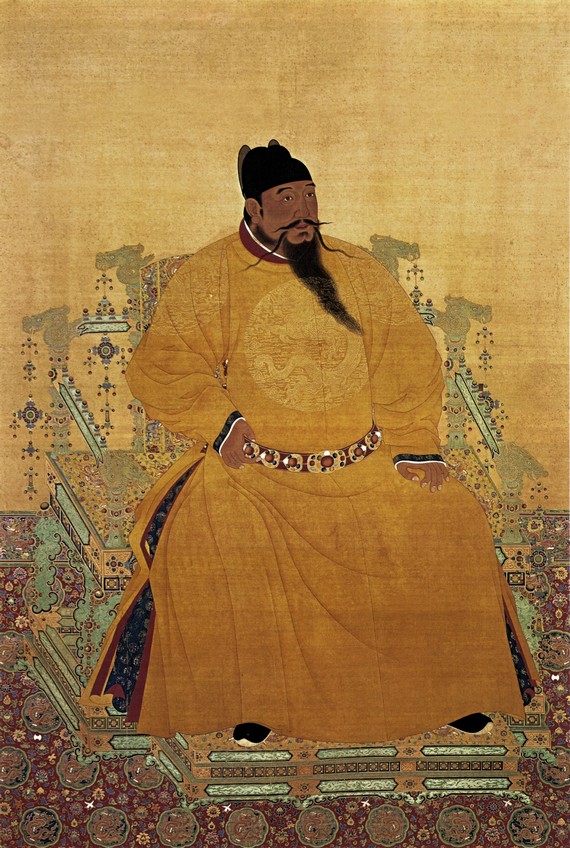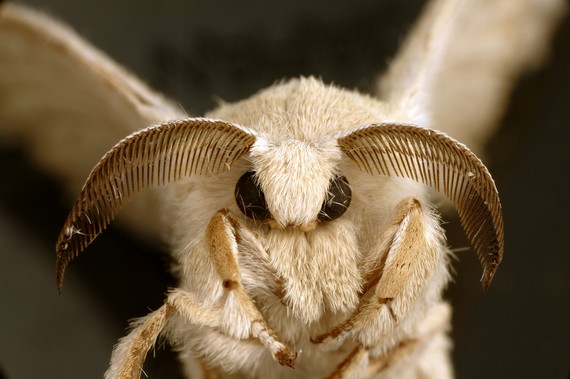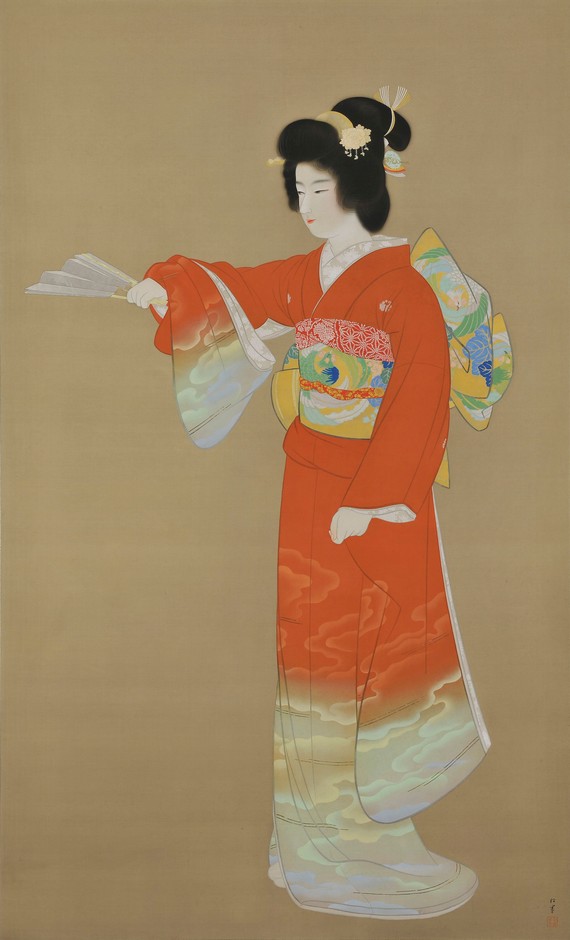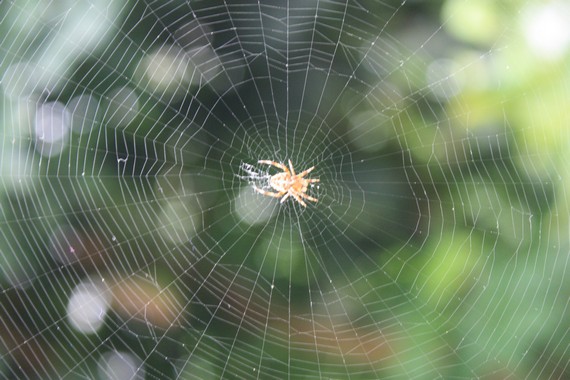Silk – What is silk made of
December 18, 2017Silk is a universally luxurious fabric, used when people want incredibly special clothes – think of emperor’s robes in ancient China, coronation gowns, ball gowns and wedding gowns. When we talk about something feeling silky it’s an expression of high approval. So let’s talk of silk, and silky things.

Emperor Chengzu of the Ming Dynasty.
National Palace Museum, Public domain, via Wikimedia Commons
Silk has been in cultivation in China since at least 7,000 years ago. It’s a protein, made by certain varieties of caterpillars to protect themselves with a soft, warm, waterproof shell whilst they metamorphosize into a moth. This worked brilliantly for the caterpillars, but the evolutionary flaw was that it was just too good: on noticing their beautiful soft cocoons, humans worked out they could unravel the cocoon like a bobbin of cotton to get themselves a long, fine thread. Once woven, it made excellent fabric.
According the legend, the first person to farm silk moths (today the Bombyx mori, descended, it is thought, from the Bombyx mandarina Moore) was the Goddess of Silk, Lady Hsi-Ling-Shih. She was the wife of the mythical Yellow Emperor, who was said to have ruled China in about 3000 BC. She is also credited with the invention of the loom. But archeological finds in China depicting silkworms as well as various tools for working this fabric date the use of the thread to even earlier.
China, the natural habitat of the wild silk moth, had a long monopoly on this luxury fabric and exported it to the rest of the world to great acclaim for thousands of years, until they caught up and started producing it themselves.
Silk – the other options

An adult silkworm moth, Bombyx mori.
CSIRO, CC BY 3.0 <https://creativecommons.org/licenses/by/3.0>, via Wikimedia Commons
However, although it’s greatly desirable for humankind, it’s not great for the moths. They are bred to be blind and flightless, only able to live a few days after they hatch in order to mate and lay eggs. But not many of them survive even that long. If these moths are allowed to hatch, they don’t carefully unwind their cocoon and elegantly step out: they just break through the filaments. So to avoid this, they are baked or steamed whilst still in the cocoon. So-called “Peace” or Tussah silk is not much better – though the moth is allowed to break free from its cocoon on its own it is not given food to continue its short life, and is still intensively farmed.
Artificial
But, there are other options. Artificial silk has been made from plants for over a hundred years, it might surprise you to learn. The original “Art silk”, also known as rayon or the trade name viscose, was first made from bamboo or wood fibres in the 1890s and became incredibly popular. Viscose is still widely used today. An artificial version was developed in 1931 using soybeans processed in formaldehyde, trademarked Azlon, which briefly took off, but then nylon came along in the late 1930s. Developed by the US as a replacement for the silk it unable to get from Japan, it proved superior to silk, rayon, and Azlon in many respects. Polyester was developed and patented just a couple of years later.
Polyester, rayon and nylon have all been developed since then to get more and more of a realistic silk-like weight, suppleness and shine. (Unfortunately Azlon never quite made it past the war years).
If you prefer natural fibres, techniques have been created to polish cotton to get a silk-like sheen. Bamboo “silk” (different to rayon), as well as many other plant fibres like flax, ramie, corn, soybean, rose and even milk protein are now available with very similar qualities.
Vintage silk

Jo-no-mai by Uemura Shoen.
Uemura Shōen, Public domain, via Wikimedia Commons
If you really like real silk, but are still looking for something more ethical, there are still possibilities. Vintage silk items, of course, are one. There are many well taken care of pieces out there. A striking choice is vintage kimono or haori. Kimono come in many beautiful colours and prints. There’s a whole code behind the meaning of the different shades and patterns regarding who should be wearing them and at what time of year. But you don’t have to be an expert to appreciate a kimono. Haoris are meant for men, and are generally in more subdued colours. Because they are much shorter, I think they are more wearable for the average Westerner. They look good as an evening jacket over a black outfit.
Another ethical way to wear the fabric is to pick a garment made of re-used fibres. Kantha scarves and jackets are really popular at the moment and are made of pieces of old saris sewn together with bright stitching.
Looking at new silk, the leftover waste from manufacturing new saris is available for craft projects online.
Spider or clam silk?

A classic circular form spider’s web.
Stephencdickson, CC BY-SA 4.0, via Wikimedia Commons
And if you’re really rich or very fortunate, there are also other kinds of natural silk. Spider silk – the stuff they make their webs with – can be extracted and woven into cloth. It is far more expensive than moth silk because it needs to be removed from the living spider carefully by hand. Apparently it doesn’t hurt the spider, who is released back into the wild. But it might hurt the handler, because female golden orb spiders, used because their thread is a natural gold colour, bite. They also bite off each other’s heads in captivity, making them hard to breed.
It takes about fourteen thousand spiders to produce an ounce of silk, which, as you can imagine, makes a very tiny piece of cloth. But there are scientific programmes world-wide to bio-engineer artificial spider silk, because of its properties. Spider silk, apart from looking pretty, is stronger than steel or Kevlar but far more flexible, stretching up to 40 percent of its normal length without breaking. Bees and ants, which also produce silk, are also being studied by scientists for bioengineering purposes.
Byssus fibre
Another very ancient natural silk is Byssus. The fibre, which is incredibly beautiful in real life, was said to be the material used for the robes of King Solomon and it has a very romantic provenance. The secret of harvesting it has been passed down from mother to daughter, and now only one woman, who lives in Sardinia, still dives for the material, as part of an ancient religious and folkloric practice. It is made from the solidified saliva of a large clam. Well, that’s not romantic, but the silk from other creatures is also made from their bodily secretions.
The difference with this is that only the fibre which the Pinna Nobilis clam naturally exudes is used. The diver goes on repeated dives to collect it, and it takes about two hundred dives to get an ounce. Byssus is not for sale but if you have the need of its mystical qualities and are prepared to go on a pilgrimage to Sardinia, you might be very lucky and awarded some.


